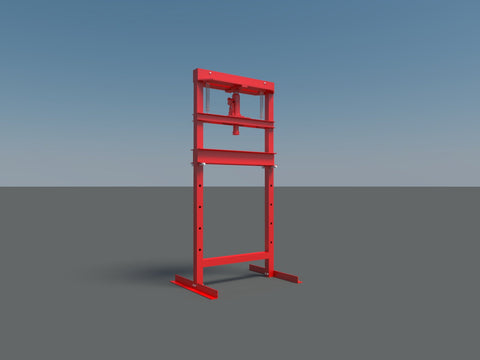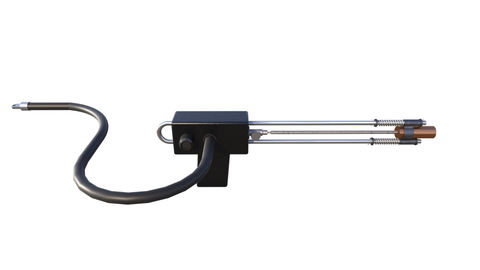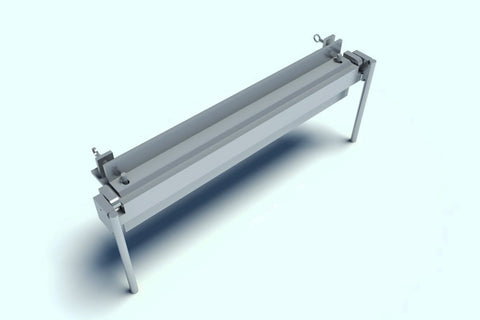Build Your Own 3pt DIY Box Blade Scraper, DIY Plans Garden Box Scraper Blading Attachment
These DIY Box Blade Scraper DIY plans are to make your own 4' box blade. I pull mine behind my garden tractor along our 1/2 mile gravel road a few times a year to get rid of the pot holes. It is also great for contouring your land, to back blade and snow removal. I recommend a 15hp tractor or larger for best results. When you are done building it will weigh around 200 lbs. 4' wide by 23"
Using a Box Blade For Backfilling and Spreading
A box blade is a versatile piece of equipment that can be used for a variety of tasks. These machines are most commonly used in farming. To ensure safe operation, users should always read the instructions on the machine's owner's manual before operating it. Though concepts are similar from one machine to another, the manual can give users the finer details. There are several types of box blades. This article discusses three different types: backfilling and spreading.
Leveling
There are a few tricks for leveling with a box blade. One trick is to use a draft control, which makes the implement float at a certain pull. The draft control helps to make the implement even, but not always. Adding a layer of landscape fabric can help control the depth of the hump. A second tip is to put a layer of 2x4 shoes on top of the soil. This will level out the soil, but will require some extra effort.
Backfilling
Using box blades for backfilling is relatively simple if you have experience using scarifiers. The blades must be level from side to side, with the 3-point engaged in the "float" position and not exerting down pressure. After a few backfilling projects, you will feel more comfortable using a box blade. Begin by spreading soil or dirt before you use the scarifier. Be sure to read the Operator's Manual carefully and follow any safety instructions.
Spreading
If you are a first-time user of a box blade, you should take a few minutes to practice using it before you attempt larger jobs. Although it may seem awkward at first, you will gain confidence as you complete several projects. Start small and spread dirt or soil, until you feel comfortable using it. Before you start a large project, read the Operator's Manual to ensure your safety and follow all guidelines.
Digging ditches
When digging a ditch, it is best to use a box blade rather than a FEL. Box blades can tilt and cut at an angle, whereas FELs make straight cuts or shallow, angled ditches. If you're not familiar with how box blades work, you can read an Operator's Manual to learn more about the features of a box blade. The manual will tell you how to use the tool and how to adjust it to suit your needs.
Snow removal
A typical box blade weighs 450 pounds, but it is the wrong implement for snow removal. A 48-inch box blade is too heavy to dig into gravel, but you can find an old beater rear blade at a local Craigslist for a fraction of the price. A box blade is not as strong as a snow plow, but it will work in some circumstances. Here are some basic tips for use.
Leveling uneven ground
A box blade is an effective tool for leveling uneven ground. To use the box blade, you must first determine where the level of the soil lies. Once you have established this, you can adjust the box blade's shanks to break up tough soil. You can also angle the blades forward to smooth rougher areas. Before leveling the ground, be sure that the ground is dry and slightly damp. Once you've determined where the level of the soil is, use the box blade to remove the dirt and level it.
Using a box blade
If you are planning on using a box blade to cut grass, make sure to read the owner's manual carefully. When working on tougher ground, you may need to angle the blades forward to scrape away the rough material. If you are working on a slope, the box blade's adjustable top link allows you to adjust the angle upward so that it scrapes the rough surface. This is the best way to get even results on both sides of the grass and the soil.
All DIY plans are designed by Ben Stone. Ben is a retired Engineer in Canada. Ben also drafts these himself using the latest AutoCAD software to ensure accuracy. He studied Engineering back in the early 1980's. After over 30 years in the Construction industry he developed a passion for building cool items around his farm and cabin. These are great DIY projects. With a little skill anybody can Do It Yourself. Ben is always a email away if you have any questions while building one of his projects. He is adding new plans all the time.














